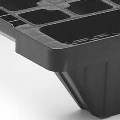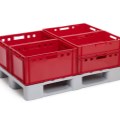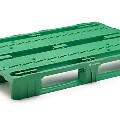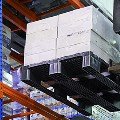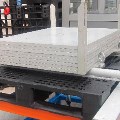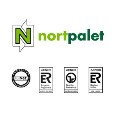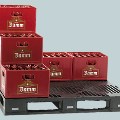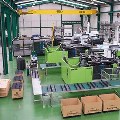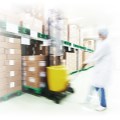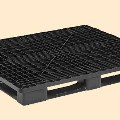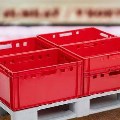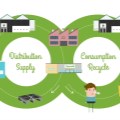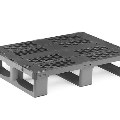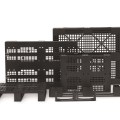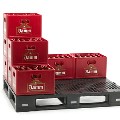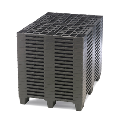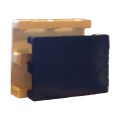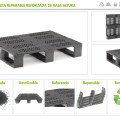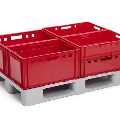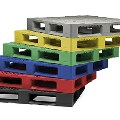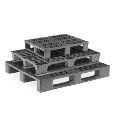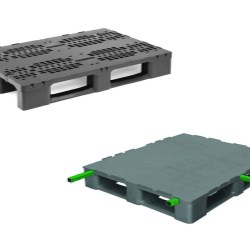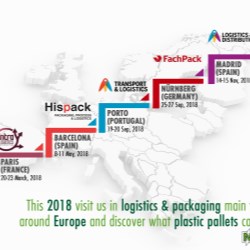If this is your company, CONTACT US to activate Packbase™ software to build your portal.
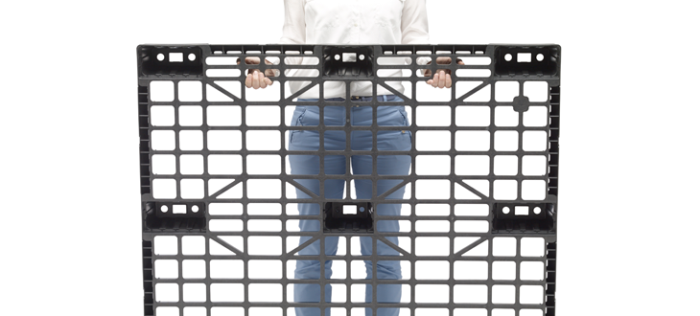

Excellent logistic management is one of the keys to success for any company. In the Retail Sector this importance becomes vital as retail is one of the main drivers of both the national and international economy,
Over 750,000 businesses in Spain belong to this sector, makin it one of the most demanding industries in terms of logistics operations.
Detailing the fine points and optimizing resources within companies is essential as integrating new elements that offer greater efficiency and security throughout the entire supply chain is important enabling a company to stand out against the competition.
The area of logistics area has advanced in recent years and this evolution, in addition to the digitalization of processes, is related to the replacement of traditional wooden pallets by plastic pallets.
In the Retail sector, specifically the textile industry, plastic pallets are becoming more important as well-known clothing brands have implemented the plastic pallet into their logistics circuits thanks to the enormous advantages that plastic pallets offer.
As a delocalized sector where the location of production and / or logistics centers is often far from the points of sale, the plastic pallet provides the perfect solution to manage the entire circuit from origin to the client's final sale location and back again.
Nortpalet, one of the largest manufacturers of plastic pallets in Spain, is experienced in the implementation of these projects, having worked with many of the leading companies in the textile sector.
What are the advantages of the plastic pallet for the textile industry?
Good logistics management allows companies to renew entire collections in times that were previously unthinkable as product rotation is increased with lower costs.
The use of plastic pallets in the textile industry has many benefits:
- Reduce transport costs carrying products, as well as returning empty. With plastic pallets the number of units transported can be increased, exceeding in some cases 1900 pallets compared to 500 in the case of wooden pallets.
- Improve the picking. More and more distributors are using plastic pallets for their picking activities, creating a closed circuit between distribution centers and stores. As nestable and highly functional models exist, it helps reducing the logistics cost for each movement.
- They are lighter than the traditional pallets, thing that helps to reduce the environmental impact. One of the direct advantages and positive aspects that plastic pallets bring to the logistics processes of the textile sector, is the reduction of CO2 emissions favoring the protection of the environment. In addition, this type of pallets is manufactured from 100% recycled plastic materials and are 100% recyclable at the end of their useful life.
- Optimization of storage and space costs. They also reduce considerably the space they occupy when empty, both in the warehouse and in the back room. Therefore, the Nortpalet’s most requested solution by textile companies is the BASIC range.
- Facilitate your handlings. Being much lighter than wooden pallets, it is guaranteed to handle the goods more efficiently, quickly and without any risk of injury.
- Its design and material prevent the deterioration of the surfaces in store. This type of pallet is characterized by being made of plastic in a single piece, so that, unlike wood, it has no splinters or pins therefore avoiding damage to the floor and other surfaces when the pallet enters the store.
- Improve visual impact. Plastic pallets offer a better visual impact according to the goods handled.
- They can be stored outdoors so storage space is reduced.
- Longer useful life of the plastic pallet compared to its counterpart wooden pallet. By having greater durability, the same pallet can make more movements in the circuit, reducing thus significantly the cost per movement.
- Residual value at the end of its useful life, the plastic pallets at the end of their useful life still has an economic value, once recycled, they are used to inject a new item. In this way the client recovers part of the initial investment.
With the incorporation of plastic pallets into the retail sector, specifically the textile industry, it has been possible not only to improve logistics, increase speed, efficiency, and safety throughout the entire supply chain, but also it has helped to protect the environment and promote sustainability.

